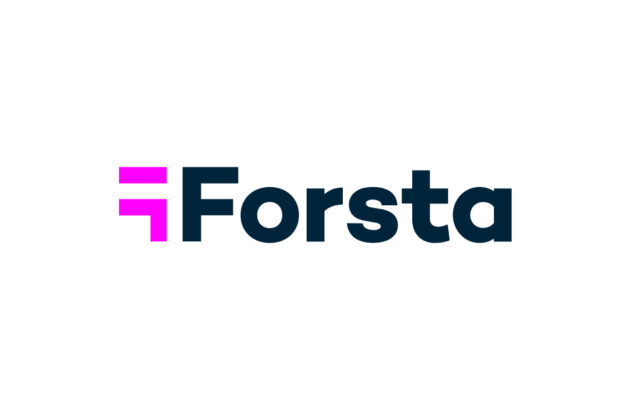Breaking down silos: The case for unified research platforms

Picture this: Your research team is knee-deep in surveys, reports, and eleventy-billion different software platforms. There’s data in one place, analysis happening somewhere else, and reporting tools that refuse to talk to each other. Meanwhile, your client is tapping their fingers impatiently, waiting for insights that could have been delivered last week.
Sound familiar?
Welcome to the chaos of fragmented research workflows.
But what if there was a better way? One where your team actually has time to think, innovate, and uncover game-changing insights (instead of just trying to piece together a never-ending data puzzle)? We hate to be predictable, but you guessed it… there absolutely is!
In this blog, we’re going to talk about why unified research platforms are the future. And why it’s time to say goodbye to siloed, disconnected, and downright frustrating workflows.
The silo problem: Why disconnected research is holding you back
Here’s the ugly truth:
- Researchers spend 80% of their time preparing data instead of actually analyzing it.
- Only 1 in 5 market research professionals use AI tools in their core strategy.
- Fragmented tech stacks slow teams down, leading to longer project timelines, higher costs, and frustrated clients.
So, what’s actually causing this?
- Disconnected platforms: Your data collection tool doesn’t talk to your analytics tool, which doesn’t talk to your reporting system. Endless back and forth ensues.
- Manual work overload: Copying, pasting, cleaning, reformatting. Rinse and repeat until your sanity wears thin.
- Lack of collaboration: When tools and teams operate in silos, knowledge gets lost, opportunities slip through the cracks, and inefficiencies skyrocket.
The result? A whole lot of wasted time, duplicated efforts, and research teams that are too busy fighting fires to focus on what really matters: Delivering insights that drive impact. So, what can you do about it?
Enter the unified research platform: A researcher’s best friend
Imagine a world where your research tools actually work together; one where data flows smoothly from collection to analysis to reporting without needing 27 different logins and the patience of a proverbial saint. That’s the magic of a unified research platform.
Instead of constantly exporting and importing data between disconnected systems, everything happens in one place, creating a seamless flow that eliminates inefficiencies. Automation and AI step in to handle the tedious tasks, freeing your team from the grind of manual data wrangling so they can focus on high-value analysis and strategic thinking. And with fewer hours lost to admin, researchers finally have the space to explore new opportunities, experiment with fresh approaches, and push the boundaries of innovation.
But here’s the real kicker: It’s not just about efficiency, it’s about growth.
New opportunities: What happens when research teams have more time?
When you take away the data chaos, amazing things start to happen. Amazing things like new services, bigger projects, greater billing potential, and wider reach.
- More client offerings: With extra time, your agency can expand into new services. Think CX programs, social listening, eye-tracking, or AI-driven qualitative research.
- Bigger & faster projects: Unified research platforms speed up data collection, analysis, and reporting, allowing agencies to handle more studies without adding headcount.
- Higher-value work: When researchers aren’t bogged down with admin, they can focus on storytelling, consulting, and strategic insight delivery (which, after all, is what clients actually pay for).
- Global reach: Automated language translation opens the doors to international audiences, bringing in richer, more diverse insights.
💡 Translation: More efficiency = More revenue streams.
(And yes, that means bigger budgets for research conferences, team retreats, or maybe just a fancy coffee machine to keep you out of Starbucks.)
So, what exactly is holding us back?
The fear factor: Is AI & integration killing research jobs?
Let’s address the elephant in the room: The fear that AI and integration will replace human researchers. It’s a concern that abounds in many industries, but here’s the reality: AI isn’t here to take jobs; it’s here to make them better. Think about it: Spellcheck didn’t replace editors, Google Analytics didn’t make marketers obsolete, and Excel didn’t put accountants out of work. Instead, these tools enhanced efficiency, eliminated repetitive tasks, and allowed professionals to focus on more valuable, strategic work.
The same applies to AI in research. Instead of drowning in manual data cleaning and endless report formatting, researchers now have the freedom to focus on the parts of their job that actually matter. Things like strategic analysis, creative problem-solving, and human intuition. AI serves as a powerful collaborator, like a workplace ride-or-die. Used to full effect, it can uncover deeper insights, faster. This means you can take on more complex, high-value projects that may not have been possible before.
Rather than being replaced then, research professionals are being empowered with better tools, streamlined workflows, and the time to do what truly excites them, delivering insights that drive real impact. The future of research isn’t about machines taking over; it’s about humans and technology working together to push the boundaries of what’s possible.
Breaking down silos: A real-world scenario
We’ve talked about the problems with fragmented research workflows, but let’s bring it to life. Imagine two research agencies: One stuck in the past, juggling disconnected tools and endless manual processes, while the other fully embraces a unified research platform. Which one do you think is thriving?
Scenario 1: The siloed nightmare
Your team conducts surveys in one platform
- Data is exported, cleaned, and reformatted manually.
- Analytics happen in another tool (one that requires more manual setup).
- Reporting involves another manual export into PowerPoint, where someone spends hours formatting slides.
By the time the final report is ready, your client’s competitors have already acted on fresher insights.
Scenario 2: The unified research dream
- Surveys, analytics, and reporting happen in one connected platform.
- AI handles data cleaning and visualization automatically.
- Reports are generated instantly, complete with interactive dashboards.
- Your team spends more time advising clients on strategic next steps, which keeps them coming back for more.
Which agency do you think wins more business and grows faster? (Spoiler alert: It’s the one that’s not stuck exporting SPSS files at 2:00 AM.)
The future of research is unified
If your research team is still dealing with fragmented tools, duplicated work, and data silos, it’s time for an upgrade. A unified research platform isn’t just about speeding up processes. It’s about freeing up time for what truly matters:
✅ More strategic, high-value insights
✅ Expanded revenue streams
✅ Better collaboration and teamwork
✅ Happier clients (and happier research teams!)
It’s not about replacing people; it’s about equipping them with the right tools to thrive. So, think about it; would you rather spend your days wrestling with disconnected systems, manually moving data from one place to another, and struggling to keep up with the competition? Or would you rather be at the forefront of the research revolution, delivering insights faster, smarter, and more effectively than ever before?
The choice is yours. But if you ask us, the future belongs to the agencies that break down silos, embrace innovation, and adopt a smarter way of working.
Ready to make the shift?
Ditch the silos, unify your research, and unlock new opportunities.
Learn how Forsta’s integrated research solutions can help your team work smarter, deliver faster, and grow bigger and can help you ditch the inefficiencies and thrive in the new era of research.
Related stories
Research HX
Many feedback programs measure Net Promoter Score movements, but few can reveal the “why” of customer behavior. Forsta’s HX Benchmarks puts performance in context so you can understand what great experiences look like for your customers. Learn more about the human-centered intelligence you need to outperform the market.

AI and the new era of customer experience: Insights for 2025 and beyond
AI and the new era of customer experience: Insights for 2025 and beyond Webinar synopsis: In today’s fast-paced digital landscape, customer experience (CX) is the ultimate differentiator—and AI is rewriting the playbook for how businesses connect with their customers. Tune in to an engaging session that blends cutting-edge thought leadership with actionable strategies to elevate […]

Integration: the new frontier of insights for research HX
Integration: the new frontier of insights for research HX Webinar synopsis: Discover the faster, smarter and more accurate way to research with Research HX. Gone are the days of sequential processes skipping between platforms. Parallel workflows, integrated steps and AI enhancements to the tools you use daily. Related resources

Learn more about our industry leading platform
FORSTA NEWSLETTER
Get industry insights that matter,
delivered direct to your inbox
We collect this information to send you free content, offers, and product updates. Visit our recently updated privacy policy for details on how we protect and manage your submitted data.